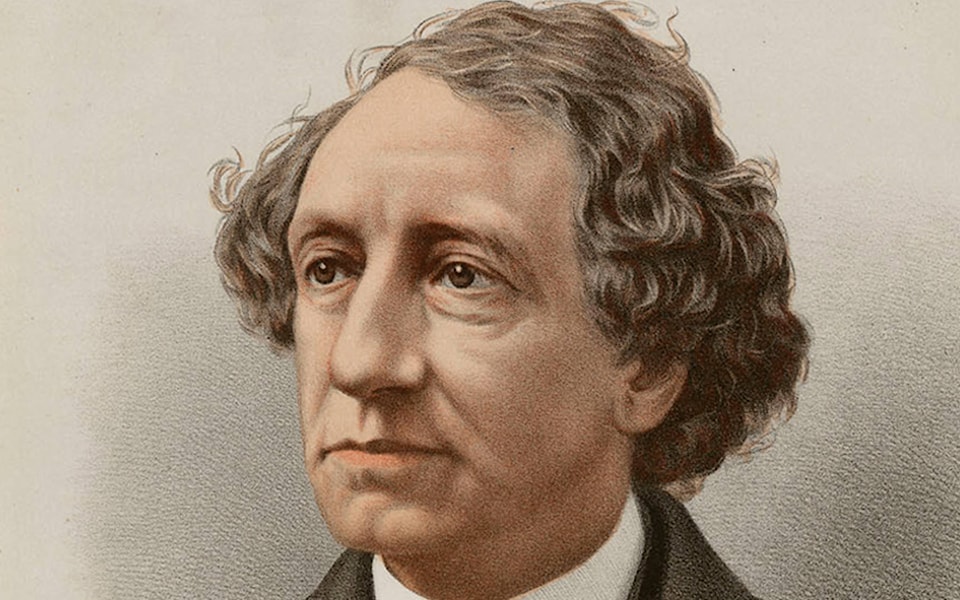The tug of war over public statues keeps exposing our blind spots — not just our blinkered view of history, but of democracy in all its complexity.
Sir John A. Macdonald is merely the latest historical figure to be pulled down and covered up, his head lopped off or layered with painted graffiti.
Protesters in Montreal toppled our founding prime minister last weekend, and Macdonald’s visage is visible no more at Queen’s Park in Toronto — protected and padlocked in a massive wooden shell after demonstrators hurled paint at his statue this summer.
Unpopular statues, like unpopular governments, ought not to be toppled in a democracy — just put in their place, placed in context, or put in storage.
Controversies over politicians of the past — like those of the present — are as old as history itself, and rarely as simple as they appear on protest placards. How we deal with them, how we heal over them, also matters in the crusade to right historical wrongs.
Sometimes, the decision is obvious — like removing Confederate statues that celebrate those who lost the civil war but still succeeded in keeping Blacks down. More often, it’s complicated.
Shall we remove the monument to Mahatma Gandhi at Carleton University, given latter-day criticisms of the Indian independence leader for harbouring anti-Black views?
What about monument to Sun Yat-sen, the revered leader who brought China into the modern era?
“Other monuments, such as to Sir Winston Churchill, to Sun Yat-sen, have also been called into question,” Wayne Reeves, chief curator of Toronto’s culture division, told the city’s Aboriginal affairs advisory committee last month.
Which raises the question of who decides. Protesters deserve to be heard, but not automatically heeded. A representative democracy defined by pluralism, mindful of minority rights and majority sentiments, requires consultation and conciliation, debate and deliberation.
A statue of Edward Cornwallis, founder of Halifax, was a festering sore given his infamous Scalping Proclamation of 1749 offering a bounty for any Miikmaq adult or child.
Ultimately, the statue was removed when elected representatives took a vote in 2018 (they voted again last month to erase his name from city streets and relocate the statue in a new museum of Miikmaq history).
That may not be as satisfying as spraypainting, or as gratifying as graffiti. But the decision is more enduring.
The controversy over Macdonald is complicated — and in many ways, intertwined with the debate over Egerton Ryerson, whose statue at Ryerson University was covered in pink paint by the same protesters this summer.
As one scholar looking into Ryerson’s relationship with residential schools noted, his name is “incorrectly linked to the architect label.” Instead, wrote Sean Carleton, “Macdonald must be understood as its architect.”
Perhaps that’s why Ryerson University added a plaque in 2018 introducing more context: “As chief superintendent of education, Ryerson’s recommendations were instrumental in the design and implementation of the Indian Residential School System,” it reads.
That he also pioneered the modernization of Ontario’s educational system remains beyond dispute.
The question is how to reconcile conflicting legacies for people like Ryerson, Macdonald, Churchill, Gandhi, and others.
At Queen’s Park, Macdonald lies boarded up. What’s interesting is that few other statues, such as one honouring Queen Victoria — who presided over so much of our complicated colonial history — get much attention.
A few steps away, a monument honours the “memory of the officers and men who fell on the battlefields of the North-West in 1885,” which surely invites historical context and Indigenous input.
The previous speaker of the legislature, Dave Levac, campaigned for years to erect a new monument to the Metis leader Louis Riel, who led the Northwest Rebellion and was later executed during Macdonald’s time as PM.
Surely the answer to our complicated historical record is to clarify and contextualize it, rather than censor it — which is why the recent addition of anonymous historical plaques adding context to some of Toronto’ís most problematic landmarks and street names is so interesting and educational.
Far better to fill in the gaps of history rather than create new historical vacuums in a country where few of us have taken the time to learn it.
“The problem I have with the overall approach to tearing down statues and buildings is that it is counterproductive,” said Sen. Murray Sinclair, who headed the Truth and Reconciliation Commission investigating the Residential Schools disaster. “We are trying to create more balance in the relationship.”
That’s similar to the approach taken by Nelson Mandela, who launched a pioneering truth and reconciliation commission when he became the first president of post-apartheid South Africa.
As president, he avoided reflexively razing the statues of his racist predecessors, opting for a more deliberative approach (some came down, others remained).
Mandela, like Gandhi, understood the frailty and flaws of all humans, not least our leaders. Let he who is without sin cast the first bronze.
Martin Regg Cohn is a columnist with Torstar Syndication Services.
